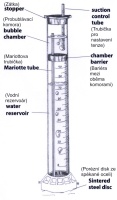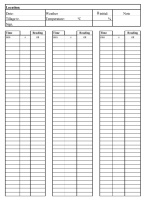The Mini Disk Infiltrometer (Decagon Devices, Inc.) is a very handy, manually operated device to measure unsaturated hydraulic conductivity at tensions between -0.5 cm and -6 cm. It consists of two chambers, which are filled with water (see Fig 1).
The amount of water, which can be infiltrated is 135 cm3. The time interval for manual readings needs to be determined according to the soil type being tested, and the tension. The recommended interval in the Userís manual for sand is 2 to 5 s, for silt loam 30 s and for tight clay 30 to 60 minutes.
Watch the video in order to see the infiltration taking place.
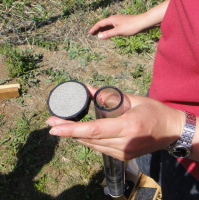
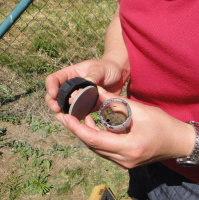
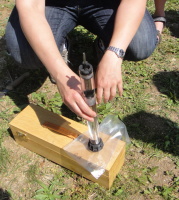
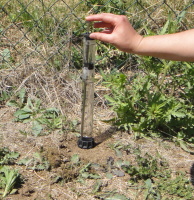
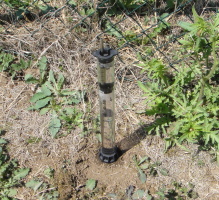
Data analysis
To determine the unsaturated hydraulic conductivity for the applied tension, a method proposed by Zhang (1997) can be applied. Cumulative infiltration vs. time is measured and then fitted with the following function (Philip, 1957):

where C1 (L T-1) and C2 (L T-1/2) are parameters related to hydraulic conductivity and soil sorptivity, respectively, I (L) is the cumulative infiltration, and t (T) the time.
The hydraulic conductivity of the soil K at the particular applied tension h is then calculated as follows:

where C1 is the slope of the curve of the cumulative infiltration vs. the square root of time, and A is a value relating the van Genuchten parameters (van Genuchten, 1980) for 12 soil texture classes to the radius of the disk and applied tension. The A parameters can be obtained from Tab 1 or calculated according to the following formulae using the van Genuchten parameters also listed in Tab 1.
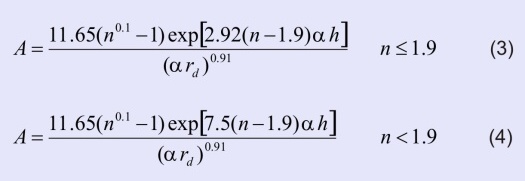
where n (-) and α (L-1) are the van Genuchten parameters, rd (L) is the disk radius and h (L) is the applied tension.
Tab 1. Van Genuchten parameters and values of A for the Minidisk Infiltrometer (Decagon Devices, Inc., 2005)
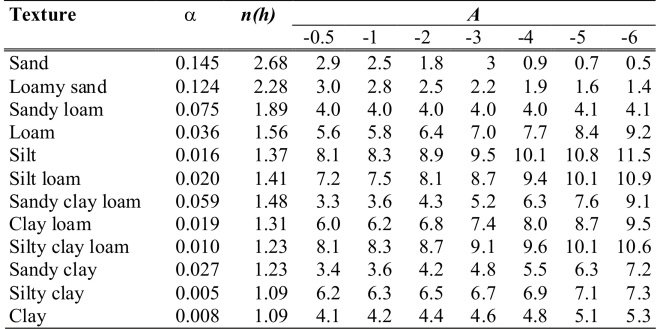
The parameter C1 is determined in the following way:
Plot the graph of cumulative infiltration I in cm (recalculated from the volume infiltrated by using the infiltration area) and square root of time t; the points need to be fitted by a polynomial function of the second degree: quadratic equation y = ax2+b, where a is parameter C1, see Fig 2. Use the Excel option "Add trendline" and make options to show the regression equation with y = 0 and to show the coefficient of determination.
The unsaturated hydraulic conductivity is then calculated based on equation (2).
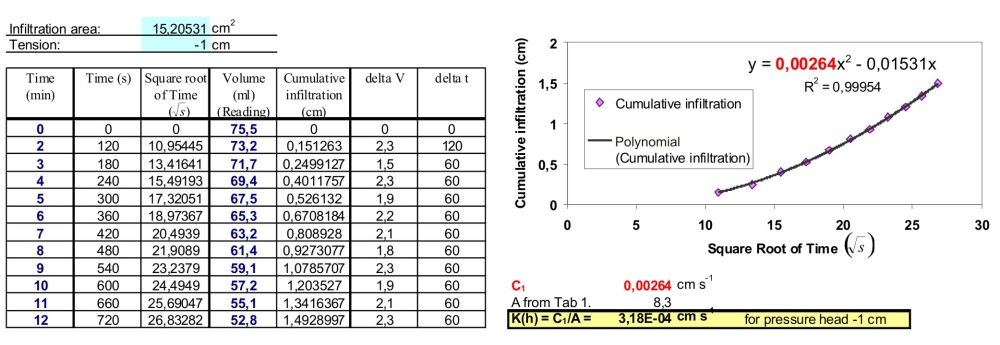
Fig 2. Example of data analysis. Similar sheet of solution can be downloaded from http://www.decagon.com.
More extensive discussion of tension infiltrometer measurement and analysis is given in Dane and Topp (2002).
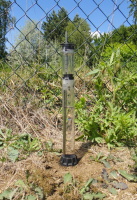
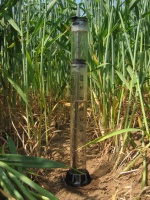

References
Dane, J.H., and G.C. Topp (eds.) 2002. Methods of Soil Analysis. Part 4 ó Physical Methods, Soil Science Society of America Book Series, Vol. 5, p. 888-896.
Decagon Devices, Inc., (2005). Minidisk infiltrometer, Userís manual.
Philip, J.R. (1957) The theory of infiltration: 4. Sorptivity and algebraic infiltration equations Soil Science 84, 257-264.
van Genuchten, M.T. 1980. A Closed-form Equation for Predicting the Hydraulic Conductivity of Unsaturated Soils. Soil Science Society of America Journal. 44(5). 892-898.
Zhang, R. (1997) Determination of soil sorptivity and hydraulic conductivity from the disk infiltrometer. Soil Science Society of America Journal, 61, 1024-1030.
Note: Fig 1 and Tab 1 are taken from the above mentioned guide "Mini Disk Infiltrometer. User's manual."











